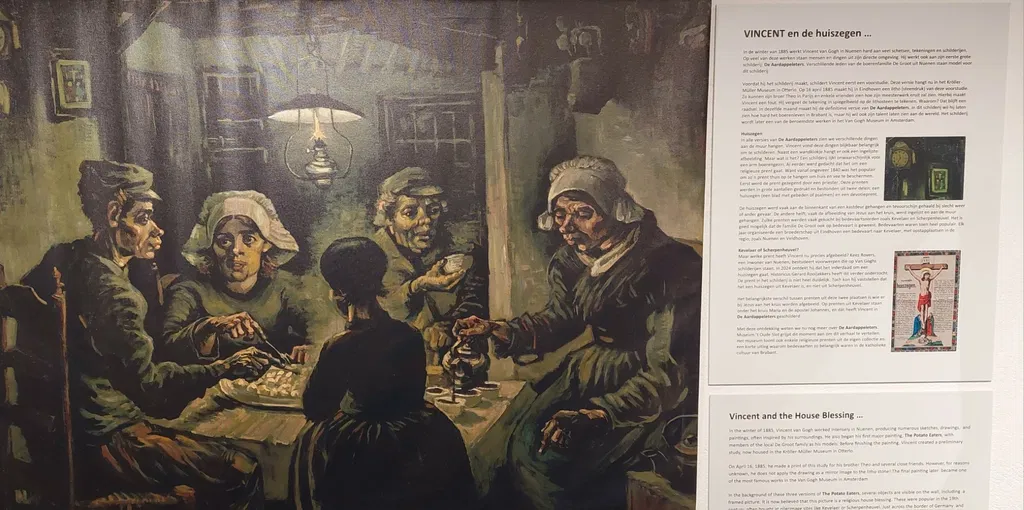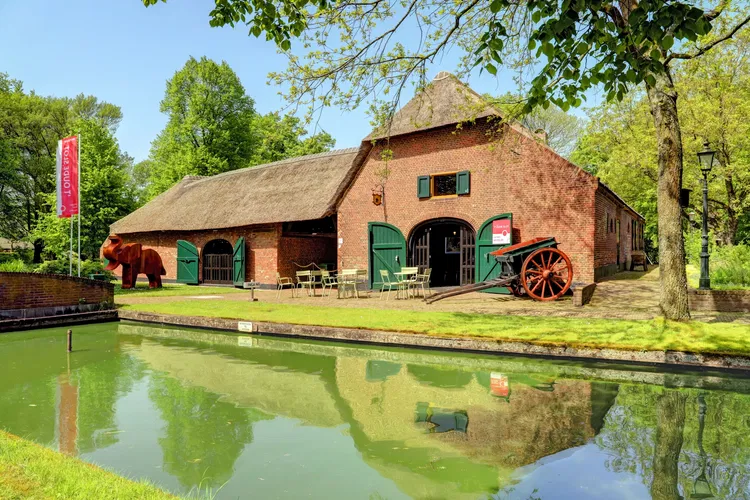Exhibition 'VINCENT, The Potato Eaters and the House Blessing' in Museum 't Oude Slot
In the winter of 1885, Vincent van Gogh lives in Nuenen. He is working on his first large painting there: The Potato Eaters. Various members of the De Groot farming family from Nuenen serve him as models. In all versions of this painting, we see a wall clock and a framed image next to it. Because a poor farming family probably would not have the money for a painting, it could be a religious print; a so-called house blessing. Kees Rovers from Nuenen has been studying objects in Van Gogh's paintings for years. In 2024, he discovers that it must indeed be a house blessing. Historian Gerard Rooijakkers investigates and confirms this. He also determines that it comes from the pilgrimage site of Kevelaer (DE). Pilgrimages were very popular at the time. For example, a brotherhood from Eindhoven has organised an annual pilgrimage to Kevelaer since 1742, starting from places in South-East Brabant, such as Nuenen and Veldhoven. It is therefore quite possible that the De Groot family went on a pilgrimage there. Prints from Kevelaer show Mary and the apostle John under the cross, and that is what Vincent painted in The Potato Eaters. With this discovery, we now know even more about The Potato Eaters. From Friday November 1st 2024, the museum tells this story using full-size reproductions. The museum also displays religious prints and pennants from its own collection and explains why pilgrimages were so important in the Catholic culture of Brabant.

